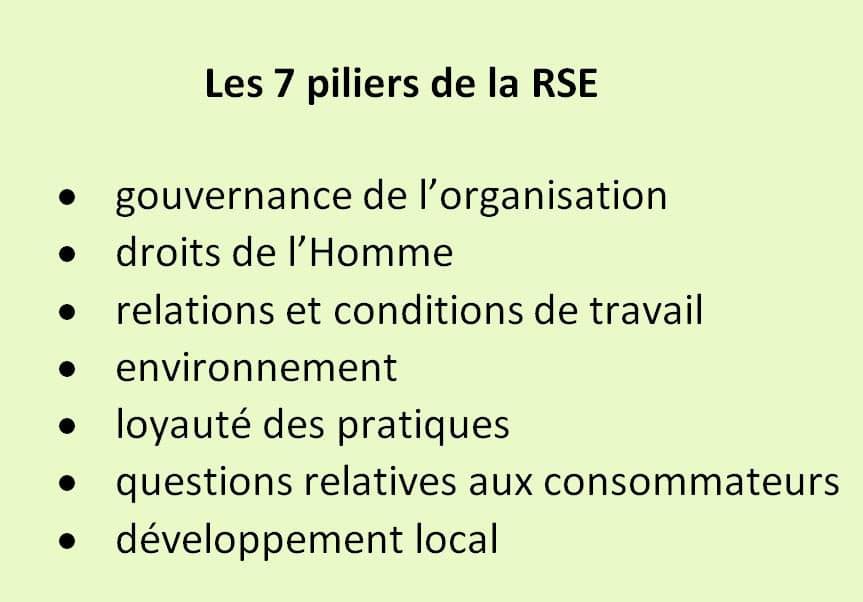[Interview]
Why define a corporate CSR strategy? How can we avoid falling into the trap of greenwashing or socialwashing? How can we strike the right balance without blocking the progress of projects within the company? Or how can we ensure that ambitious objectives are successfully implemented on the ground? For Hoël Beau, CSR trainer, facilitator and consultant, the success of the approach depends above all on the "strength of the team".

When it comes to CSR (corporate social responsibility), success depends above all on commitment. The commitment of a working group that needs to be motivated and "on board". "Before saying what the company is going to do or how it is going to do it, it is necessary to explain why the company is going to do it." Hoël Beau answers ORSYS' questions.
Why implement a CSR strategy in your company? So that's the first question to ask?
Yes, indeed! The question of why is an essential prerequisite. Some people or brands succeed in getting others (customers, partners, employees, etc.) on board, and this is no accident. Apple, for example, is renowned for its inspirational leadership.

It's a success that can be explained by the Golden Circle. A concept put forward by Simon Sinek at a Tedx conference in 2010.
The starting point for any reflection or strategy must be the why, in other words the raison d'être. Then comes the how, i.e. the value proposition or competitive advantage. Only then does the what come into play: the idea, the service or the product. In short, this tool enables you to develop your CSR strategy based on meaning.
What is the first step in defining the reasons for your CSR strategy?
The first step is to train the company's management teams. In other words, the Executive Committee. When I run the training Implementing a CSR approachI start with a collective intelligence workshop. The idea is to bring all participants to the same level of knowledge of the subject. And CSR, with its 7 pillars, is a vast subject!
The participants will ask themselves why, and then share these questions with their teams. This will help them to move forward more effectively, because it is meaning that drives action.

Alternatively: organise a "world café. Sometimes the best ideas emerge informally around the coffee machine or at an afterwork party! The concept of the world café is to reproduce this state of mind. In just a few minutes, participants try to answer an initial question. For example: what is CSR? They gather in small groups around tables with a large blank sheet of paper. Each person writes down an idea, which may give another idea to another participant, and so on... Some people move from one table to another to answer the other questions.
The use of these methods in training with management teams demonstrates their usefulness and effectiveness. The participants leave with the intention of spreading them within their companies.
What do you think are the main reasons why companies are implementing CSR?
For some managers, it's a question of aligning their company's activities with their ecological convictions. They want to help society move towards greater sustainability. They may also have in mind the sustainability of their company, in the sense of longevity.
Others see an even more direct benefit for their company.
Firstly, in financial terms. On the one hand, companies with a CSR approach are 13 % more profitable on average (compared with their competitors without a CSR approach). Secondly, it is a springboard for accessing new sources of finance. Investors are increasingly vigilant about a company's actions in this area.
Secondly, in terms of image. CSR is also an opportunity to boost your employer brand to attract the best profiles. Or to re-motivate certain employees in search of meaning.
Last but not least, in terms of cost management and risk management. This includes energy, with soaring prices and shortages...
In the end, whatever the reasons that prompt a management team to take the path of CSR, it serves the climate cause. And if good practice is followed, it is not a cost but an investment and a source of opportunities!
How can the company take concrete action?
When it comes to CSR, you have to rely on the strength of the collective!
Once the management team has been formed, it's time for the employee awareness of the company. For example, the climate fresco is an ideal format for making information accessible to all. In three hours, the idea is to get participants to work together in a fun way. Using cards, they build a fresco together to understand how the climate system works, and the causes and consequences of its disruption.
Then, the key stage in the move to action is the setting up a steering committee. There is no standard composition. It all depends on the context of the company. However, CSR calls for diversity and transparency. These are two factors to be taken into account when appointing committee members.
All that remains is to identify the first actions. The company is not starting from scratch! It already has practices that respond in whole or in part to one or more areas of CSR (QWL, responsible purchasing, eco-design, etc.). It must therefore start by carry out a self-diagnosis. Firstly, it will enable him to make the most of what has already been doneor even 'well' done. Then, to assess its impact on its external environment, i.e. its relations with its stakeholders in the broadest sense.
Finally, we're entering a fairly classic process of project management.
A few tips to get you started
- Setting priorities
- Identify the actions with the best benefit/effort ratio
- Identify actions that will have a quick win result
- Identifying good practice
What do you need to watch out for to ensure successful deployment in the field?
First of all, take care of communication. I call on companies to be honest in their approach. When it comes to image, greenwashing is even more damaging than inaction! CSR calls for transparency and therefore for relying on the good communication practices. In other words, the data that the company communicates must be factual, measurable, verifiable. This transparency must permeate its external communication, as well as its internal communication.
Afterwards, reduce resistance to change. In principle, prior work to raise awareness and communicate the meaning of the approach should make it possible to avoid or at least limit it. The fact remains that each employee in a company has a different degree of maturity when it comes to CSR issues. This requires an awareness on the part of the management team, managers and even all employees that not everyone is at the same point. And, in this case, it's better not to enter into conflict but rather to "welcome" opposition.
Last but not least, avoid the top/down strategy ! The best ideas are not those that are written down on paper, but those that are brought to life by the teams.
For example, how do you avoid this pitfall?
To be very concrete, let's talk about the experience of a a major food group with several thousand employees. Its top management is developing a CSR policy that is both highly ambitious and well-constructed. However, on the ground it is a failure. The company was unable to deploy it in an operational way. So it invited its operations managers to collective intelligence workshops.
After the initial workshops, it became clear that the policy was being rolled out in a very top-down way, with little buy-in from the teams. The collective intelligence workshops then asked the operations managers how they could integrate the company's CSR policy into their activities. The participants brainstorm together: what are the success stories? What are the obstacles? What solutions can be found to overcome them?
This creative phase generated commitment on the ground. And thanks to this commitment, the implementation of the company's CSR policy.
The important thing to remember is that CSR should not be a constraint imposed from above. Rather, it should be an opportunity to recreate links with suppliers, customers, investors and, above all, employees!


